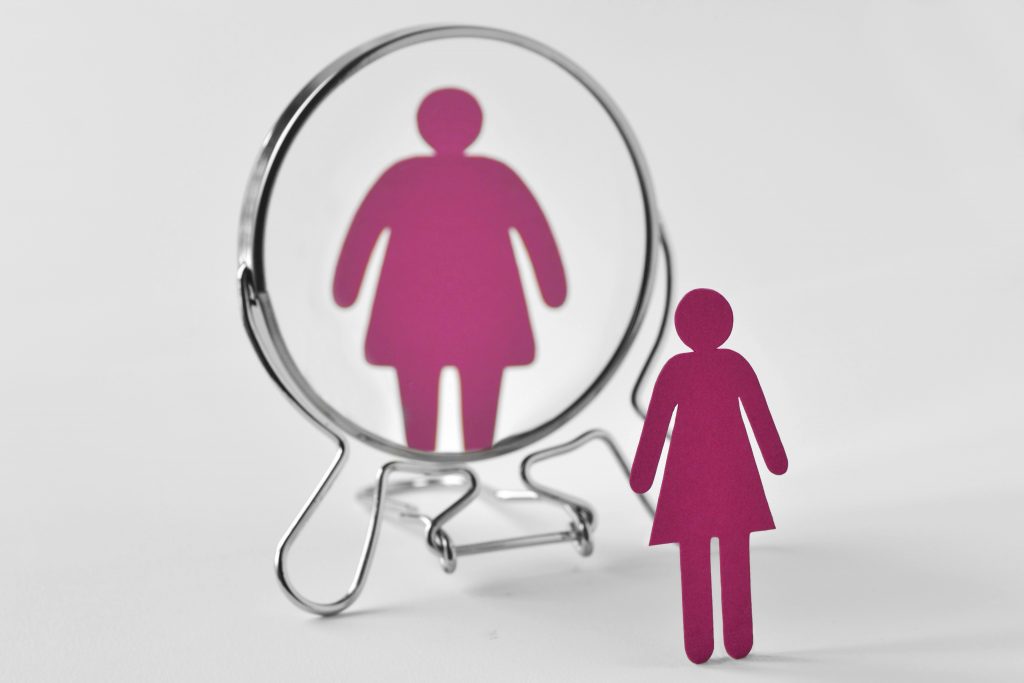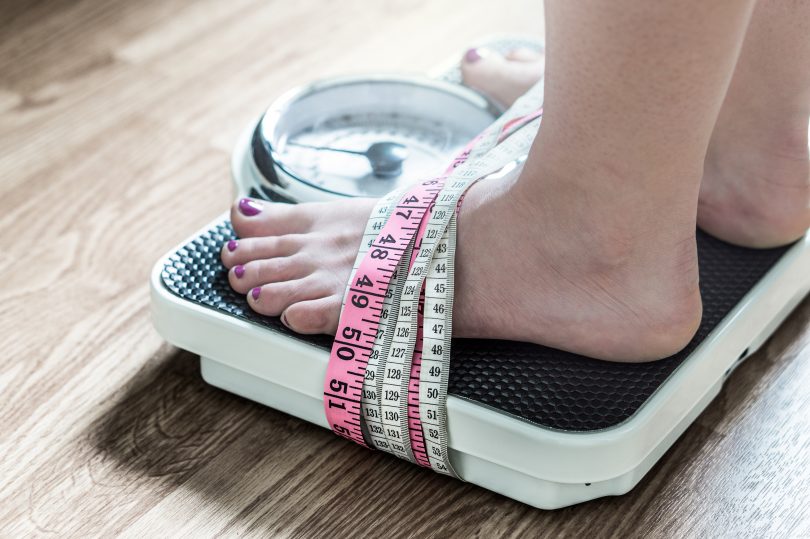It almost sounds counterintuitive to say it, but yet another possible application of cannabis is in the treatment of eating disorders like anorexia nervosa and bulimia. It’s quite possible that the ability of marijuana to build an appetite, while also helping with symptoms of anxiety, makes it a great treatment option for those suffering from certain eating disorders.
The new rage in the world of cannabis is the addition of delta-8 THC. Slightly different than delta-9, with less anxiety and psychoactive high, delta-8 is the newest way to get into cannabis. Sound interesting? We can hook you up with the best Delta-8 THC deals so you can investigate for yourself what this new-fangled version of THC is really about!
What is an eating disorder
An eating disorder fits under psychiatric disorders which means first and foremost, there is no medical definition, as in, there is no formal proof that can be made. The definition according to psychiatry, is a disorder “in which the people experience severe disturbances in their eating behaviors and related thoughts and emotions. People with eating disorders typically become pre-occupied with food and their body weight.” This, of course, extends to both ends of the spectrum, those who are overeating for their body weight, and those who are undereating for their bodyweight.
As always with psychological disorders, as there is no medical definition or confirmation, these disorders are identified only through the diagnosis of a doctor, and are therefore subjective in their interpretation. It is also quite possible, because of a lack of a medical definition, that different professionals can levy entirely different diagnoses on the same patient. Having said that, all the examples listed below highlight basic eating disorder categories, each with its own individual symptoms.
According to the National Eating Disorders Association (NEDA), approximately 20 million women and 10 million men will develop an eating disorder at some point in life. The National Institute of Mental Health thinks its even higher, stating that approximately 25% of college students have an eating disorder. It should be remembered that binge eating is included here, and that these statistics come from subjective diagnoses.
Examples?

1) Six of the more well-known eating disorders are as follows: The most well known is anorexia-nervosa. This eating disorder is characterized by a limitation in food intake, often to the point of extreme malnutrition and physical emaciation. Sufferers often have distorted body images whereby they see themselves as looking different (generally in a negative capacity) then how they actually look, with this discrepancy being focused on weight. Anorexia can affect men or women, but is more commonly seen in women.
2) Bulimia-nervosa is also very well known. It is characterized by a binge/purge pattern in which the sufferer will at times eat large amounts of food (exercising no control in the process), and then work to purge themselves of the food by vomiting, using laxatives, diuretics, enemas, or excessive exercise. While some publications (including the one referenced) name fasting as a method of purging, this would have to be an extreme fast that is intense enough to effect health (it isn’t uncommon to eat a lot at one point, and not get hungry – or choose not to eat – for a much longer than normal period of time.) Much like anorexia, this is more commonly experienced by women.
3) Binge eating is also very common, maybe the most common of all, although to the majority of people it is simply known as ‘overeating’. In binge eating cases, the sufferer will consume excessive calories, experience a lack of control while doing so, but unlike in bulimia cases, will not attempt to expel the excess calories. For this reason, this eating disorder is often associated with being overweight or even obese. In fact, the purging or not purging of the calories is what separates binge eating from bulimia, and in most other ways including the lack of control, large amounts of food and small consumption time, and overall feelings of guilt, embarrassment and shame, the two are about the same. Simply overeating here and there does not constitute entry into this category. Getting an actual diagnosis implies an existing pattern of extreme behavior.
4) The top three disorders are known to most, but here is where it gets a little weird. The next disorder on the list is pica. In pica cases, the individual is likely to be hungry for all kinds of things that aren’t exactly food. This can mean ice, soil, soap, hair, pebbles, detergent etc. As you might imagine with some of the inputs on this list, this can cause some severe issues if the wrong material is ingested, both in a person accidentally poisoning themselves, as well as considering all the infections and injuries that such non-foods can cause internally. Pica can be experienced by anyone, but is generally seen in children, the pregnant, and those with mental disabilities.
5) Next is rumination disorder, which also has a kind of strange definition that those of us in the regular eating world, were probably not aware of. A person with this disorder regurgitates food which has already been swallowed, and then re-chews the food, and swallows once again, or spits it out. This is, essentially, what animals that chew their own cud do, however this is obviously not a characteristic of basic humanity. The reflux occurs within about 30 minutes of a meal, and is completely voluntary, unlike with acid reflux. This disorder can affect men and women, of any age, and often resolves itself when seen in infants. It is a newly recognized disorder.
6) Avoidant/restrictive food intake disorder is generally seen in infants and children only, but can persist into adulthood. It involves a disturbance in eating which can be due to having no interest, or an issue related to the temperature, taste, texture, or smell of something. This is only identified in extreme cases and shouldn’t be confused with simply being picky. People with this disorder might even be diagnosed with other conditions like failure to thrive if they can no longer mature due to lack of nutrients. This disorder has nothing to do with food availability.
How could cannabis help?

The first thing to consider when looking at cannabis for eating disorders is that – as previously mentioned – they are not medically defined. They are only defined through a grouping of symptoms which leads to a subjective diagnosis. Cannabis and eating disorders can be studied by observing changes in behaviors related to food when cannabis is consumed.
Cannabis has been used for quite some time to treat the anorexia associated with diseases like cancer and AIDS – called cachexia, where the inability to eat causes the person to waste away. Cannabis has been used in this way since it was reintroduced back into Western medicine more recently, with plenty of research being done which supports the use of cannabis in this way. Less research has been done on anorexia nervosa, which is voluntary, whereas cachexia is not.
However, there are some studies. Cannabis could be useful for helping with the underlying anxiety of some eating disorders, and by supporting a healthy appetite. This study from 2017 which investigated the effects of delta-9 THC on anorexia-nervosa symptoms found no overall increase in BMI, but it did show significant positive results in terms of self-reporting for body care, feelings of ineffectiveness, and general depression. The study authors concluded that delta-9 could be effective in the treatment of psychological symptoms associated with anorexia.
One study even found that using cannabis makes food smell and taste better to the eater, which could be a big draw for those attempting to keep themselves from food.
A systematic review from 2017 investigating the efficacy of cannabis for different psychological and neurodegenerative diseases, included two studies done on cannabis and anorexia. In one study with 11 female participants being given titrated amounts of THC, similar weight gain was shown to diazepam – aka valium. It should be noted that three patients in the THC group had to be withdrawn due to negative side effects, which begs the question of why doses were not individualized based on needs. However, they were not, so it is unclear if the issues experienced could have been alleviated with smaller doses. What is clear is that valium, as a benzodiazepine, is a highly addictive drug, and getting the same benefit from cannabis would mean a significantly safer alternative.
The second study in the review used dronabinol as the form of THC. Dronabinol is a pharmaceutical cannabis medication that does contain THC in it. The placebo-controlled study consisted of two four-week periods with a four-week clean-out period in between. The study presented evidence that dronabinol encouraged weight gain, as much as .73kg compared to the placebo group.

Some speculate that issues like anorexia and bulimia are related to imbalances in the endocannabinoid system, for which cannabis can be useful in regulating. It is speculated that these disorders result from impairments in this system, with the hypothesis that cannabis, as an agent that effects the endocannabinoid system, could be used for positive benefit. As noted by Dr. John Krystal, editor of Biological Psychiatry which put out a report in 2011, “The role of endocannabinoids in appetite control is clearly important. These new data point to important connections between this system and eating disorders.” There is obviously much more to be investigated here.
Issues with cannabis for eating disorders
When it’s said that cannabis can be good for eating disorders, its important to specify which ones. Cannabis has been known to cause episodes of binge eating, so it wouldn’t be the likely answer for someone who is already having issues controlling their overeating. It also might be questionable for those suffering from things like pica – where it could encourage more unnecessary and dangerous eating, or bulimia where it could encourage even bigger binges.
The dose used is also very important to consider when it comes to cannabis for eating disorders. In one study, three participants were removed due to negative side effects with THC, but this was done rather than assessing personal limitations for THC consumption. Accounting for the fact that different people will handle things differently, and require different amounts of medication, is a generally important point in medicine. Not accounting for this is a massive detraction for any study using standardized doses, especially if the study authors did not consider this. However, having said that, it’s important to remember that high doses of THC can cause a cannabis overdose with negative side-effects, and this should always be considered when treating someone who already has mental issues.
Conclusion
New applications for cannabis are being discovered (and rediscovered) every day. Cannabis might not be best for all eating disorders, but it might be useful for those suffering from anorexia-nervosa. These days, everything is about body image and weight. The idea that cannabis might help anorexia sufferers to feel better about themselves, or even add on a few pounds, is incredibly useful, and highlights another great example for medical cannabis.
Hi and thanks for joining us at CBDtesters.co, your hub for all cannabis-related news. Stop by often to keep up-to-date with the world of legal marijuana, and sign up to our newsletter so you never miss a beat!
Resources
Can You Treat COVID-19 With CBD and Reduce Mortality Rates? A New Israeli Research Believes You Can!
How Does CBD Treat Addiction?
Compared to Prescription Medication, Medical Cannabis Not Always Affordable Alternative
Can You Treat COVID-19 With CBD and Reduce Mortality Rates? A New Israeli Research Believes You Can!
America Is Cannabis Friendly – It’s Official New Vaping Bill: Effective March 2021 No More Mail Order Of CBD & Delta-8 THC Vape Carts
What is DELTA 8 THC (FAQ: Great resource to learn about DELTA 8THC)
Lebanon Legalized Medical Cannabis, 1st in Arab World
Mama Cultiva & the Fight for Cannabis Legalization
The CBD Flowers Weekly newsletter (your top resource for all things smokable hemp flowers)
The Medical Cannabis Weekly newsletter (International medical cannabis business report)
Cannabis Heroes of History: How Robert Randall Beat the U.S.
The Delta 8 Weekly Newsletter (All you need to know about Delta 8 thc) and the Best Black Friday Delta 8 THC Deals 2020. The best delta-8 THC deals, coupons and discounts.
What Are The Qualifying Medical Conditions For Cannabis In Your State? Argentina Allows Cannabis Self-Cultivation
Why Using THC Is Good for the Eyes








Rumination Syndrome is NOT always completely voluntary—for many sufferers such as myself it is entirely involuntary and very difficult to live with. Please do your research on rare conditions so you don’t contribute to the stigma of people with this syndrome doing it “on purpose”.